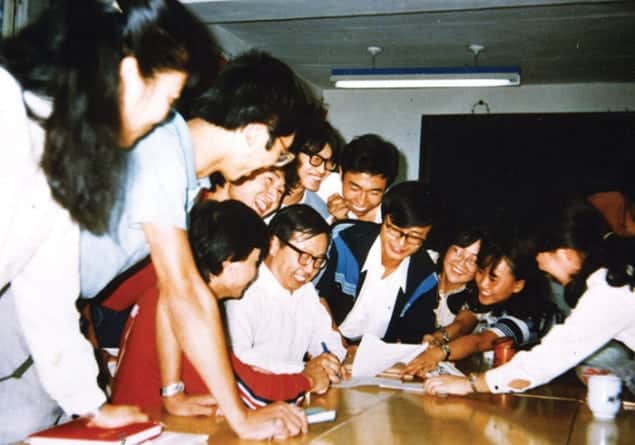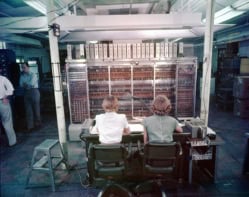Richard McCray reviews The Most Wanted Man in China: My Journey from Scientist to Enemy of the State by Fang Lizhi, translated by Perry Link

On the evening of 6 June 1989, two days after the massacre at Tiananmen Square, an official from the US embassy invited the astrophysicist Fang Lizhi and his wife, Li Shuxian, to take refuge at the US embassy in Beijing. For the next 13 months, under the precarious protection of the US ambassador, they remained inside the embassy, until delicate negotiations yielded an arrangement by which they were permitted to depart China for the UK. During this period of exile, Fang and Li were not allowed to communicate with the outside world. With time on his hands, Fang began to write this memoir, which is one of the most insightful accounts we have of the chaotic period of Chinese history that began with the founding of the People’s Republic of China and culminated with the Tiananmen massacre. It is also a revealing portrait of a courageous scholar whose role in history has been compared to that of Andrei Sakharov in the Soviet Union or Galileo in 16th-century Florence.
Born in Beijing in 1936, Fang had a childhood that was remarkably tranquil, given the Japanese occupation, the Second World War and the civil war that followed. Then, toward the end of 1948, Nationalist troops occupied his high school and Fang joined the Federation of Democratic Youth, an underground organization with links to the Communist Party. The following year, after the Nationalist defeat, Mao Zedong proclaimed the founding of the People’s Republic of China. At about the same time, Fang’s aptitude for science began to shine, and he entered Peking University three years later, flush with excitement about physics and patriotic fervour.
While still an undergraduate, Fang was invited to join an elite group whose core task was to calculate a model for neutron diffusion in a breeder reactor. Nowadays, this calculation could be done with an iPhone in less than a second; then, it took 300 of the brightest young physicists in China several months to work it out with abaci. But physics was not his only passion, and his memoir becomes a love story as he describes meeting a brilliant and spirited classmate, Li Shuxian. Their shared passions for physics and Communism fed a growing romance, and when they (first Li, then Fang) were invited to join the Communist Party, their future looked golden.
Upon graduation, Fang was assigned to a “work unit” of the Chinese Academy of Sciences, while Li was given a post as an interpreter for visiting Soviet physicists. Meanwhile, though, a string of incidents was leading Fang and Li first to question Communist orthodoxy, and ultimately to become completely disaffected with the party. In 1957 Mao Zedong announced his “Let a hundred flowers bloom” policy. This supposed attempt at liberalization quickly revealed itself as a cynical plot to ferret out and persecute anyone with the temerity to question the party line. Fang and Li walked right into the trap: together with a friend, Ni Wansun, they began drafting a letter to the Party Central Committee calling attention to some of the harm the “Anti-Rightist” crackdown was doing to the party. Warned by friends not to send the letter, they abandoned their plans, but copies of Ni’s outline were distributed. That was enough. Fang summarizes the events that followed with characteristic irony, calling it “a splendid success: in a single blow an entire gang that had planned one whole letter that had never been mailed was completely annihilated”. All three were expelled from the party, and although Li was permitted to remain at Peking University under a cloud, Ni was fired from his academic post and sent to do labour reform. Fang, meanwhile, was banished to an impoverished village, where he did manual labour for eight months.
For the next 15 years, Fang’s career oscillated between extremes. After he returned to Beijing in 1958, he was appointed to the newly founded University of Science and Technology (USTC), where he embarked on a picaresque odyssey in physics, beginning with nuclear and elementary particle physics, then solid-state physics, then laser physics and finally cosmology. In 1961 he and Li married, and they later had two sons. However, both Fang’s research and his family life were regularly interrupted, as he was repeatedly sent away to labour as a farmer, a coal miner, railway builder and brick maker. His descriptions of these assignments – particularly the bizarre attempts to increase farm productivity during the Great Leap Forward – are both comical and horrifying, as they resulted in the death by starvation of more than 20 million people. Fang also gives a first-hand report of the persecutions during the Cultural Revolution, which caused many gifted intellectuals to commit suicide.
The death of Mao in September 1976 precipitated a dramatic change in Fang’s fortunes. In February 1979 he was reinstated as a member of the Communist Party. He was allowed to travel abroad, which he did frequently and with relish, becoming something of an international celebrity for his outspoken views on science and intellectual freedom. In 1981 he became a member of the Chinese Academy of Sciences, and in 1984 he was appointed vice-president of the USTC.
This might have been Fang’s happy ending but for, as he puts it, his “addiction to trouble”. The reform movement that followed Mao’s death gained momentum rapidly, becoming especially popular among students, who regarded Fang as a hero and often invited him to speak at their gatherings. Initially, party leaders had encouraged these reforms, but by early 1987 Deng Xiaoping had had enough. Fang was expelled from the party for a second time and sacked from his position at the USTC. He obtained another job, teaching cosmology at the Beijing Observatory, but by this time, the democracy movement had caught fire with students throughout China, and attempts to suppress it only fanned the flames. The movement culminated in May 1989 with the occupation of Tiananmen Square and its brutal suppression on 4 June, when some 300,000 troops opened fire on the crowd, killing thousands of demonstrators and sending Fang and Li into their 13-month exile at the US embassy.
Fang does not cover the post-embassy period in his memoir, but Perry Link, a noted scholar of East Asian languages and culture, has enriched his beautiful translation with an insightful foreword and afterword. In the latter, we learn that, after their release, Fang and Li spent several months at the University of Cambridge before moving to the Institute for Advanced Study in the US. In 1992 Fang accepted an appointment at the University of Arizona, where he remained until his untimely death in 2012.
What will be the legacy of Fang? He has been called a brilliant scientist, and he was certainly a prolific researcher, but I cannot identify any singular contributions with a lasting impact on astrophysics or cosmology. It is instructive, though, to compare his circumstances with those of Sakharov. Like Fang, the Soviet dissident and nuclear scientist was persecuted by his government for defending intellectual freedom. However, Sakharov also enjoyed a privileged life in the company of some of the greatest physicists of the time, including Lev Landau, Vitaly Ginzburg and Yakov Zel’dovich. Fang had no such peers. Yet with virtually no contact with the international research community – and with the almost constant distractions of the Maoist chaos – he succeeded in educating himself and his colleagues in modern astrophysics.
As I write this review, I have just returned from a visit to some of the leading centres for astrophysics in China. Several of the leaders at these institutions are former students of Fang. Many younger scientists have been inspired by the example of his life, so eloquently documented in this memoir. That, surely, is his true legacy.
- 2016 Henry Holt £21.99/$32.00hb 352pp



